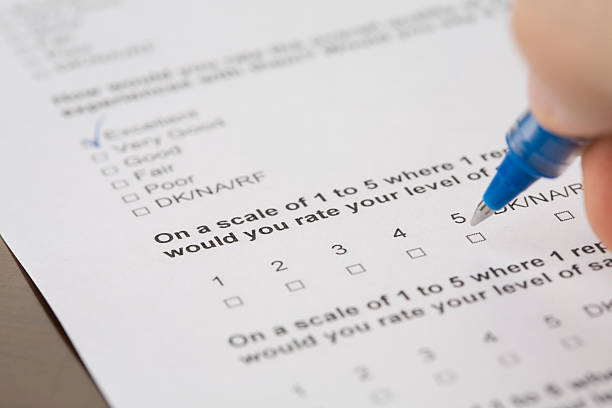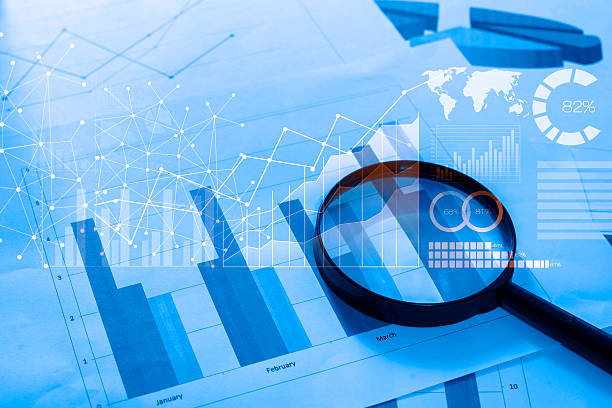Learn the essential steps for comparing survey data effectively with detailed subtopics

Introduction
In an era dominated by data, the ability to effectively compare survey results is not just an advantage; it’s a necessity. Surveys can provide a goldmine of information, helping businesses understand their customers, students grasp academic concepts, and researchers draw significant conclusions. This article dives deep into the nuances of comparing survey data, ensuring you walk away with actionable insights. With expertise and first-hand experience, we’re here to guide you through the process.
Compare Survey: An Overview
Surveys have been instrumental in gathering information for centuries. From ancient civilizations looking to gauge public opinion to modern businesses seeking customer feedback, the power of a well-crafted survey cannot be underestimated.
History of Surveys
Back in the day, surveys were conducted manually, with researchers collecting data through face-to-face interactions or via paper forms. The digital age has revolutionised this approach, making it easier and more efficient to gather, analyse, and compare survey results from different sources.
Importance of Comparison
Comparing surveys enables researchers to draw correlations, identify trends, and make informed decisions. Whether you’re a business looking to enhance customer satisfaction or a student aiming to understand a particular subject, effective survey comparison can be a game-changer.
Types of Surveys to Compare
When it comes to comparing surveys, it’s essential to understand the type of survey you’re dealing with. Different surveys serve different purposes, and comparing apples to oranges can lead to skewed results.
Descriptive Surveys
These are designed to describe a phenomenon at a specific point in time. For instance, a business might conduct a descriptive survey to gauge customer satisfaction at a particular moment.
Analytical Surveys
More in-depth than their descriptive counterparts, analytical surveys aim to find out the why behind a particular phenomenon. For example, if a descriptive survey reveals low customer satisfaction, an analytical survey might be used to uncover the reasons.
Setting Clear Objectives
Before you dive headfirst into comparing surveys, it’s crucial to set clear objectives. Without a defined purpose, you’re essentially flying blind.
Defining the Purpose
What do you hope to achieve by comparing the surveys? Whether it’s understanding customer behaviour, gauging employee satisfaction, or any other goal, having a clear purpose will streamline your efforts.
Crafting Research Questions
Research questions act as a roadmap, guiding you through the comparison process. Frame them in a way that they shed light on your primary objectives, ensuring your comparison is on track.
Collecting Reliable Data
Garbage in, garbage out! Reliable data is the foundation of any meaningful comparison. If your data is flawed, your comparison will be too.
Importance of Sampling
A well-defined sample ensures your survey results are representative of the larger population. By understanding the principles of sampling, you can collect data that is both accurate and relevant.
Avoiding Bias
Bias can sneak in and distort your results. Whether it’s selection bias, response bias, or any other type, being aware of potential pitfalls and taking measures to avoid them is crucial.
Effective Tools for Comparison
In today’s digital age, various tools can help you compare survey data seamlessly. Whether you’re a fan of manual analysis or prefer digital tools, there’s something for everyone.
Digital Tools
From software like SPSS and Excel to more specialised tools, the digital world offers myriad options to compare survey results effectively.
Manual Analysis
For those who prefer a hands-on approach, manual analysis can offer unparalleled insights. While it might be time-consuming, the depth of understanding it provides can be invaluable.
Interpreting Results
Data is only as good as the insights it provides. Once you’ve compared the surveys, it’s time to interpret the results.
Visual Representations
Charts, graphs, and infographics can make complex data more digestible. They not only simplify the findings but also make them more engaging.
Statistical Significance
It’s crucial to determine whether the differences you observe in your comparison are statistically significant. This ensures that your findings aren’t just due to random chance.
Potential Pitfalls & Solutions
Like any research method, comparing surveys has its challenges. However, by being aware of potential pitfalls, you can take steps to mitigate them.
Common Mistakes
From comparing unrelated surveys to misinterpreting results, there are several common mistakes that researchers often make. Being aware of these can help you steer clear.
How to Overcome Them
Knowledge is power! By understanding potential challenges, you can devise strategies to overcome them, ensuring your comparison is both accurate and meaningful.
Maximising Survey Insights
So, you’ve compared your surveys and interpreted the results. What next? It’s time to leverage those insights.
Leveraging Data
Data-driven decision-making can set you apart from the competition. By leveraging the insights from your comparison, you can craft strategies that are both effective and informed.
Actionable Strategies
Data is only useful if it leads to action. Whether it’s tweaking a product based on customer feedback or overhauling a business strategy, the insights from your survey comparison should drive tangible results.

FAQs
– What is the primary purpose of comparing surveys?
Comparing surveys helps in drawing correlations, identifying trends, and making informed decisions based on data from different sources.
– How can one avoid bias while comparing surveys?
To avoid bias, ensure that the sampling method is robust, questions are framed neutrally, and respondents represent a diverse cross-section of the target audience.
– Are digital tools better than manual analysis for survey comparison?
Both methods have their merits. While digital tools offer efficiency, manual analysis can provide a deeper understanding. The best approach often involves a combination of both.
– What role do visual representations play in interpreting survey results?
Visual representations like charts and graphs make complex data more accessible and engaging. They help simplify findings and present them in a more digestible format.
– How can businesses benefit from comparing surveys?
Businesses can gain insights into customer preferences, identify areas of improvement, and craft strategies that resonate with their target audience.
– Are there any common pitfalls to avoid while comparing surveys?
Yes, some common pitfalls include comparing unrelated surveys, overlooking biases, and misinterpreting results. It’s essential to approach the process systematically and critically.
Conclusion
The power to effectively compare survey data is an invaluable asset in today’s data-driven world. Whether you’re a business, researcher, or curious individual, understanding the nuances of survey comparison can lead to profound insights and informed decisions. By setting clear objectives, collecting reliable data, leveraging the right tools, and interpreting results critically, you can unlock the full potential of your surveys. Dive deep, compare wisely, and let the data guide you!
External Links/ Sources:
Comparing Two Types of Online Survey Samples
Comparing and Linking Survey Data: Considerations for Working with Multiple Data Sources
